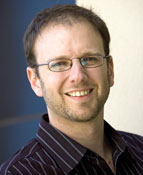From the editor: Particle physics revitalized
 |
| Photo: Reidar Hahn, Fermilab |
Is particle physics recognizably the same research enterprise it was a year ago? This time last year, tight lab budgets required Fermilab to implement furloughs for all staff, SLAC laid off 15 percent of its workforce, and a variety of research programs in particle physics in the United States were cancelled or postponed.
As we go to press, the US Congress has passed an FY09 budget that restores many of the cuts to science funding, a proposed FY10 budget outline includes increases for science, and the president has declared, We will devote more than 3 percent of our GDP to research and development. This is very positive news for the science community, including particle physicists, and scientists are keenly digging back into their research.
Investment in basic research is a strong driver of long-term economic growth and the generator of many other benefits. The particle physics community is currently working hard to make these benefits clearer to the taxpayers who provide the majority of their research funding. More still needs to be done on that front and a solid study of economic benefits is desirable, as Fermilab Director Pier Oddone comments.
We are entering a very exciting period for particle physics with a renewed enthusiasm due to the budget improvements and the recent and imminent startups of many new facilities around the world. This spring, the Tevatron collider at Fermilab set one record after another, and its experiments produced a string of headline-making results. Meanwhile, the Large Hadron Collider at CERN is moving closer to having first colliding beams with repairs progressing smoothly.
The upgraded Beijing Electron Positron Collider (see Chasing charm in China) recently began operation, Fermilab broke ground for the construction of the NOνA neutrino experiment, and designs for SLACs FACET plasma wakefield particle acceleration facility are progressing quickly. The Japan Proton Accelerator Complex (J-PARC) just started sending a beam of neutrinos straight through the earth toward the Super-Kamiokande detector on the other side of the country.
Other accelerator-based projects are developing rapidly. DESYs PETRA III synchrotron in Germany accelerated its first beams for the production of X-ray light and SLACs Linac Coherent Light Source switched on as the worlds first X-ray laser with such high-energy X-rays in such short, bright pulses.
With the new funding, a whole catalog of experiments at the energy, intensity, and cosmic frontiers has renewed vigor. It is incumbent on the particle and accelerator physics communities to demonstrate that they are investing their increased funds for the benefit of both science and society.
David Harris, Editor-in-chief
Click here to download the pdf version of this article.


